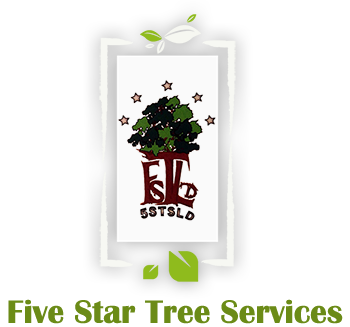Each tree species is genetically programmed to grow to a certain height and density. This is how we have classifications such as miniature trees or ones we know for certain only grow a certain height. Another example is a bonsai tree, opposed to a red wood; we know that each will grow to a certain height. But there are particular environmental factors that can stunt or accelerate growth. One question people ask is that if they have a tree that outgrows the location it’s planted, can you stop its development/growth? The answer is a confusing yes and no. Our team at Five Star Tree Services wants to dive into the reasoning behind this answer and go over how you can manage tree growth.
There are a few different options you can choose from to try and manage your tree’s growth. They are as follows:
Consider Full Growth Size Potential
Before you run out and buy a tree and plant it anywhere in your yard, you need to be aware of exactly how big it is going to get at full growth. Most trees, unless specifically stated, don’t stay a small sapling forever and they will grow quite big and tall when fully grown. When someone plants a tree without thinking it through, this can result in it outgrowing its planted area. Another thing to consider, that most people forget about, is the root system and trunk size. Big trees need a big root system and they will spread far and wide in order to help the tree survive. Make sure to know all the specifics about any tree you are going to plant, most importantly being the development expectations. This will help you pick a good area to plant your tree.
Consistent Pruning
Depending on the kind of tree you have, it’s possible to manage how big it gets with appropriate pruning. We want to be clear that this method is to moderate its limb reach and does not actually prevent it from developing. Rather, it only maintains the size of the tree. We also want to point out that some blooming trees might have trouble producing flowers if constantly pruned. You also want to make sure you aren’t over-pruning your tree as this can result in death.
Growth Direction
This is where you can selectively prune your tree so that new growth is where you want it most. Most growth happens at the tips and ends of branches, as well as at the top of the tree. Removing new branches around the top or sides of the tree will let other new branches grow where there is more space. But some trees react differently than others when pruned this way. For instance, some have the opposite effect and will get new growth and regrow exactly where you didn’t want it.
Pick A Tree Known to Be Small
To begin with, get a miniature tree or one that is known to be smaller than a regular sized tree. There are a lot of different tree options that have either been genetically engineered to be smaller or naturally don’t grow very tall. These are great options for small yards or ones with limited clearance. These trees also typically require less maintenance and are less of a hazard if they ever fall over.
Tree removal
If there is no other option, you should remove the tree if it has outgrown its space and is becoming a hazard. Do not take this option lightly and it should be considered as a last resort. This is also the costliest option and can vary depending on how large the tree is and if it is hazardous or in a bad location. Tree removal should also only be done by a trained professional. Transplanting should also be considered before removal. This is where it’s important to consult with a licensed arborist, to weigh your options and pick the best solution for your situation.
How Five Star Tree Services Can Help
Always remember that these options are ways to help manage tree overgrowth and unless you remove a tree, it will continue to produce new development. If you want Five Star Tree Services to help you with your tree care in Toronto, contact us today at (416) 990-3355!


